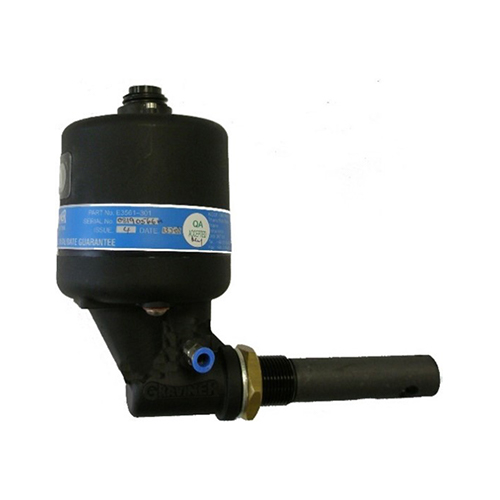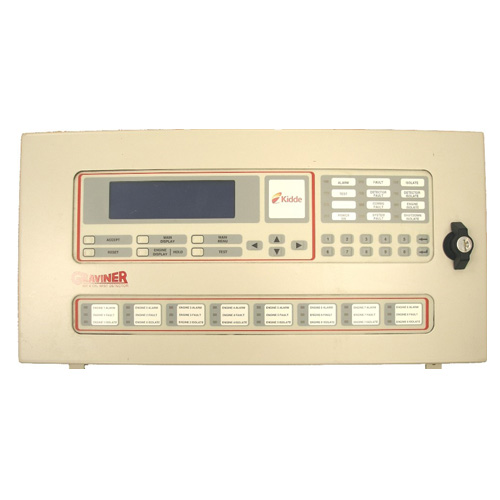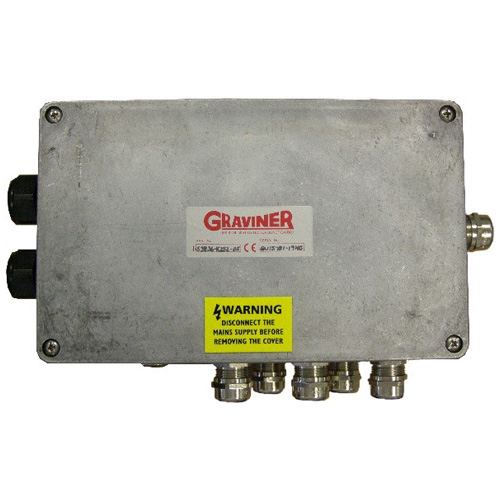Share:
Graviner MK6 Oil Mist Detector
Under the International Association of Class Societies (IACS)
- Engines with a bore size above 300mm
- Engine output greater than 2,200kW (2,950hp)
- Engine room routinely unmanned
Oil Mist Detectors (OMD’s) are an integral part of critical safety systems designed to detect certain conditions that could lead to crankcase explosions on large Diesel engines. They are typically installed in harsh operating conditions - particularly with respect to temperature and vibration - and are expected to provide continuous service over extended periods. They are therefore subject to considerable wear and tear.
High temperatures, in excess of 200oC that occur on bearing surfaces under initial failure conditions, can lead to a rapid generation of oil vapor When the hot vapor contacts the relatively cooler atmosphere of the crankcase it condenses into a fine mist, with typical particle sizes of around 0.5 to 5 microns in diameter. When the density of these particles reaches between 30 to 50 mg/I (Milligrams per liter), depending upon the type of oil, an explosive condition exists.
A fire or explosion needs three constituents: fuel, oxygen and an ignition source. Remove one of these and no explosion will occur. Similarly, within the crankcase, the three constituents which could cause an explosion are air, oil mist and an ignition source, the “hot spot’. Using optical measuring techniques, oil mist density can be measured at levels as low as 0.05 mg/I and give early warning of a rise in oil mist density.
Oil Mist Detection (OMD) techniques have been used to monitor diesel engine crankcases for potential explosive conditions and early detection of bearing failures. The systems available rely mainly on analysing the optical density of oil mist samples drawn from the crankcase compartments, through pipes to the Detector. While these systems proved successful in the past, engine design has improved significantly over the years and oil mist detection techniques have improved substantially to maintain adequate protection.
- The Graviner MK6 OMD retains the long established differential measuring system, which enables high sensitivity to be used while maintaining the maximum false alarm rejection. It still uses optical sensing, but light scatter instead of obscuration. This enables very small Detectors to be used. These are rugged and designed to be engine mounted using standard oil mist detector ports. As they each have their own means of sample acquisition no sample pipes are required. Multiple internal light sources ensure that a single failure will not cause the loss of a Detector. Modular construction means that a faulty Detector can be replaced in a matter of minutes
- The Graviner MK6 OMD system can comprise up to 64 Detectors directly mounted on the crankcases of up to 8 engines, allowing both main propulsion and auxiliary generators to be monitored at the same time
- Each Detector communicates electronically over a serial data link via the engine mounted Junction Box with the Control Unit which is designed to be mounted within the Engine Control Room. This eliminates the need to enter the machinery space in alarm conditions
- For each engine the average oil mist density from each Detector is calculated and stored. Each Detector signal is then compared in turn with the stored average. A positive difference (the deviation) is then compared with a pre-set, but adjustable reference (the deviation alarm level) for that engine (or Detector). If it is greater than the reference a deviation alarm is indicated. The stored average level is also compared with a preset reference (the average alarm level) and an average alarm is indicated if the reference is exceeded
- A full system of 64 Detectors over 8 engines has a maximum scan time of 1.2 seconds, but with alarm priorities that enable the system to respond if an alarm occurs
- The Graviner MK6 OMD retains the long established differential measuring system, which enables high sensitivity to be used while maintaining the maximum false alarm rejection. It still uses optical sensing, but light scatter instead of obscuration. This enables very small Detectors to be used. These are rugged and designed to be engine mounted using standard oil mist detector ports. As they each have their own means of sample acquisition no sample pipes are required. Multiple internal light sources ensure that a single failure will not cause the loss of a Detector. Modular construction means that a faulty Detector can be replaced in a matter of minutes
- The Graviner MK6 OMD system can comprise up to 64 Detectors directly mounted on the crankcases of up to 8 engines, allowing both main propulsion and auxiliary generators to be monitored at the same time
- Each Detector communicates electronically over a serial data link via the engine mounted Junction Box with the Control Unit which is designed to be mounted within the Engine Control Room. This eliminates the need to enter the machinery space in alarm conditions
- For each engine the average oil mist density from each Detector is calculated and stored. Each Detector signal is then compared in turn with the stored average. A positive difference (the deviation) is then compared with a pre-set, but adjustable reference (the deviation alarm level) for that engine (or Detector). If it is greater than the reference a deviation alarm is indicated. The stored average level is also compared with a preset reference (the average alarm level) and an average alarm is indicated if the reference is exceeded
- A full system of 64 Detectors over 8 engines has a maximum scan time of 1.2 seconds, but with alarm priorities that enable the system to respond if an alarm occurs





